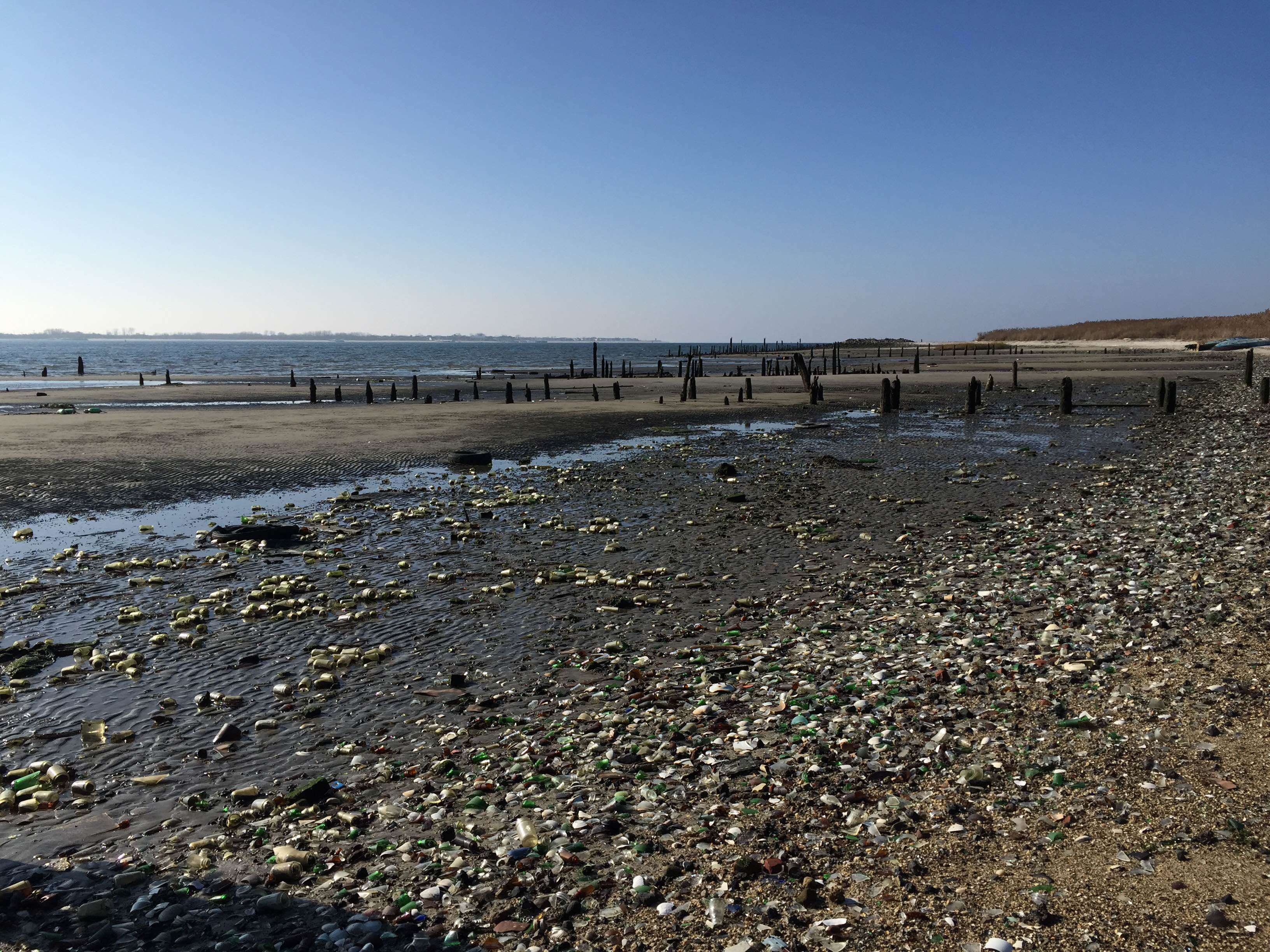
BROOKLYN – When Mickey Cohen was in junior high, his teacher brought in a praying mantis eggshell.
“She said, ‘If you want to find these things on your own, the best place to go is the marshlands around Floyd Bennett Field,’” Cohen, a retired biologist, recalled.
Cohen, now 88, first visited these marshlands in the 1940s. At that time, there was a sandy beach filled with garbage and bones and carcasses of dead horses–remnants from factories in the past that processed animal remains. Cohen continued to visit through the 1950s and watched the area change after a landfill was created on the shoreline. In the late 1950s, the landfill broke open.
“There was a huge storm, and waves rolled in, broke the landfill and washed the soil away,” said Cohen.
Dead Horse Bay, as it is known today, was formed over the past 50 years, as the landfill’s debris has been further unearthed and washed up along the shoreline. Located between Gerritsen Creek and the Rockaway Inlet, this stretch of beach contains salt marshes, thriving wildlife and sand embedded with trash and artifacts.
Dead Horse Bay has become an attraction for biology enthusiasts and scavengers in search of mysterious treasures. Artists and collectors scavenge the beach for treasures, finding broken bottles, leather shoe soles and pieces of old cameras, among other things.
“Do you know any other landfill where people can visit and walk to pick up things and examine them and get an image of past lives, past culture?” said Cohen. Eventually, these artifacts could either stay on the beach, be thrown away or be preserved in a museum exhibition.
The grounds of Dead Horse Bay are eroding. Plans are being developed to preserve and restore the area, but observers are concerned about the amount of money and time that will be needed to complete the work.
Wave action and storm surge are the main causes of the erosion, according to Lisa Baron, a project manager for the U.S. Army Corps of Engineers. Eventually, erosion will destroy the salt marshes and the area’s wildlife will suffer.
Don Riepe, who writes about wildlife for the Jamaica Bay Guardian, said, “Over time, the shorelines of Dead Horse Bay will erode due to sea level rise, so you have a higher level of water coming in.”
The Army Corps of Engineers has a plan for the future, but local people and park rangers fear that the work won’t be done in time. Peter Weppler, chief of the environmental analysis branch of the army corps, said that the projected cost to restore Dead Horse Bay is $66 million.

The entire process would not only be costly, it would also take considerable time. Weppler said the Army Corps of Engineers has been evaluating Dead Horse Bay since 2000. The army corps is now in the process of drafting a report, to be completed by summer 2016, which will recommend restoration plans for the area. The entire process could take years more.
The Army Corps of Engineers plans to begin its project with a debris removal program, restoring the marsh area, and creating more sand dunes. Debris removal is the most controversial aspect of the project, as some visitors see the debris as pieces of history. The debris would be evaluated to determine whether it should be seen as trash or an artifact.
“If they are found [to be artifacts], we usually have to record them and archive them,” said Weppler.
Cohen feels that the artifacts from Dead Horse Bay should be preserved in an exhibit at Gateway National Recreation Area, a national park that comprises areas in Brooklyn, Staten Island and Sandy Hook, N.J.
“I keep recommending, have a display called ‘urban archaeology,’” he said.
Riepe, who has helped clean up Jamaica Bay for years, feels the artifacts should stay on the beach, and the area should be covered up with more sand.
No one knows for certain what is in store for Dead Horse Bay. Baron is not confident the Army Corps of Engineers project will be completed.
“I couldn’t tell you specifically what are the future conditions of Dead Horse Bay,” she said. “It’s not going to improve on its own.”
